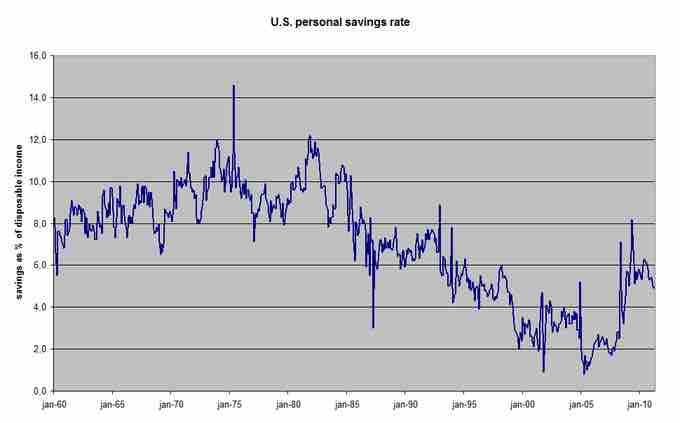Governments have a strong interest in affecting the savings and investments in an economy. Both savings and investment affect the overall economy. For example, if an economy is overheating, a government might want to disincentivize investment or consumption, and would therefore be interested in increasing the savings rate. If an economy is in a recession, a government would want to encourage savers to start spending or investing their money .

US Savings Rate
The US government may want to increase the savings rate if the economy is in a downturn, and increase it if the economy is overheating.
There are a number of ways in through which a government can incentivize savings and investment. Broadly, each incentive adjusts the cost of saving or investing. We will discuss two main ways to affect the savings and investment rates here.
Monetary Policy
One of the main tools of central banks is the interest rate that it charges banks to hold their money overnight. This rate is ultimately passed on to the bank's depositors. Depositors, in turn, adjust their levels of savings and investment based on that rate.
Take, for example, a high interest rate. At a high interest rate, it is very expensive to borrow money: investors will not want to invest because they have to pay a lot of interest on their loans. Savers, on the other hand, love high interest rates: they earn a lot simply by keeping their cash in the bank. High interest rates encourage savings and discourage investment.
The precise opposite is true for low interest rates. When rates are low, investors know they can borrow money to finance investments cheaply. At the same time, savers aren't earning much by keeping their money in the bank. Low interest rates encourage investment and discourage savings.
Much of a central bank's actions are focused on adjusting how much people save and invest.
Taxes
The government can also incentivize savings and investment in a number of ways. The most common way of doing so is by adjusting tax rates. Governments offer individuals and firms who take the action it desires. For example, a government can offer a tax break to companies that are investing in a desirable area (e.g. medicine). It can also encourage savings through tax breaks. Roth IRAs are an instrument for saving for retirement that the US has made tax exempt (under certain conditions). In the first example, the government uses tax reductions to encourage investment for companies. In the second, the government encourages saving by helping savers earn more of the interest they earn over time in the savings vehicle.